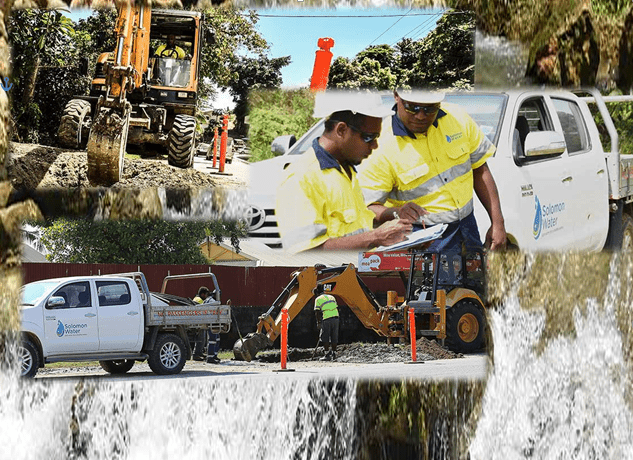BY JOHN HOUANIHAU
SOLOMON Islands Water Authority – Solomon Water has announced an SBD 474 million water supply system and sewer system improvement projects that will help enhance the reliability and resiliency of Honiara City’s water system infrastructure to continue meeting the needs of this growing urban area.
The project aims to achieve the following areas that will improve the reliability of the City’s water system and sewer system in Honiara:
Water Supply System – SBD 314 Million
1. Treatment of Kongulai water source to prevent outages;
2. New reservoir source to improve reliability;
3. New trunk mains to improve water transmission in the system;
4. Reduction of NRW losses-efficiency improvement;
5. Expansion of service-additional 40,000 people served;
Sewer System Improvement – SBD 160 Million
1. Rehabilitation of sewer pump stations at point Cruz and KGVI;
2. New sewer pump stations and collection system;
3. The rationalism of sewer outfalls from 15 to 2;
4. Septic treatment plant.
The projects will be co-hosted by the Government’s Division of Environment and Conservation and Solomon Islands Water Authority.
The 9 years, multi-million dollar urban water supply and sanitation sector project (UWSSSP) is co-funded with the partnership of Asia Development Bank (ADB), World Bank, and the European Union aimed at the people of Solomon Islands.
Solomon Water Engineer, Ray Anderson said the projects are called the Urban Water Supply and Sanitation Sector Project (UWSSSP) with several sub-projects aimed at the provinces.
“The two main projects will be here in Honiara and it aims to improve the water supply system costing SBD 314 million and SBD 160 million to improve Honiara sewer system.
Anderson said that the provincial urban centers that were entitled to the UWSSSP’s ADB (Asian Development Bank), the WB (World Bank), and EU (European Union) are Auki, Malaita province, Tulagi, Central province, Munda, Noro, and Gizo in the Western provinces.
He added that for Auki, Noro and Tulagi there would be an upgrade on their existing water supply systems while this will be a new chapter and benefit for the people of Munda and Gizo to access SIWA once the project is implemented.
“This is to extend our services to the provinces to ensure our clients and people have access to water quantity and quality that is reliable and efficient to the people,’’ Ray said.
Urban water supply system and sanitation sector project, Deputy Team Leader, Kenneth Bulehite said that key component projects for Honiara are to improve the water supply system infrastructures including sewer system infrastructures.
“What will happen is to improve the treatment of Kongulai water source to prevent outages, new reservoir storages and upgrading to improve water reliability, connecting off new trunk main to improve the transmission of water through the systems.
“…and the major one that is to reduce the non-revenue water losses to improve the efficiency of water and the expansion of services, the idea is to aid anther 40,000 people to connect to water,’’ Bulehite said.
He explained that a new main pipeline inter-connection will be installed from the Kongulai water source through White River to Rove as the first phase of the project.
Bulehite revealed that another pipeline system to be improved and upgraded is the East Kola main pipeline that runs from the reservoir tank near to the Solomon Islands Governor General’s residential area, through Kukum labor line and SDA.
“This will improve the existing water supply services in the northern edge of the distribution zone and will ensure distribution capacity for long-term requirements and plans in the area.
“The other one is the Panatina main pipeline that is to improve the Panatina existing water supply services at the east Honiara that include Burns Creek, Honiara Airport, including the future development of new sporting facilities and future development from Lunga,’’ he said.
He explained that the three main reservoirs to be upgraded and improved as well are the Panatina which is already replaced, Tasahe, and the building of a new reservoir to replace the old Titinge Reservoir Tank.




